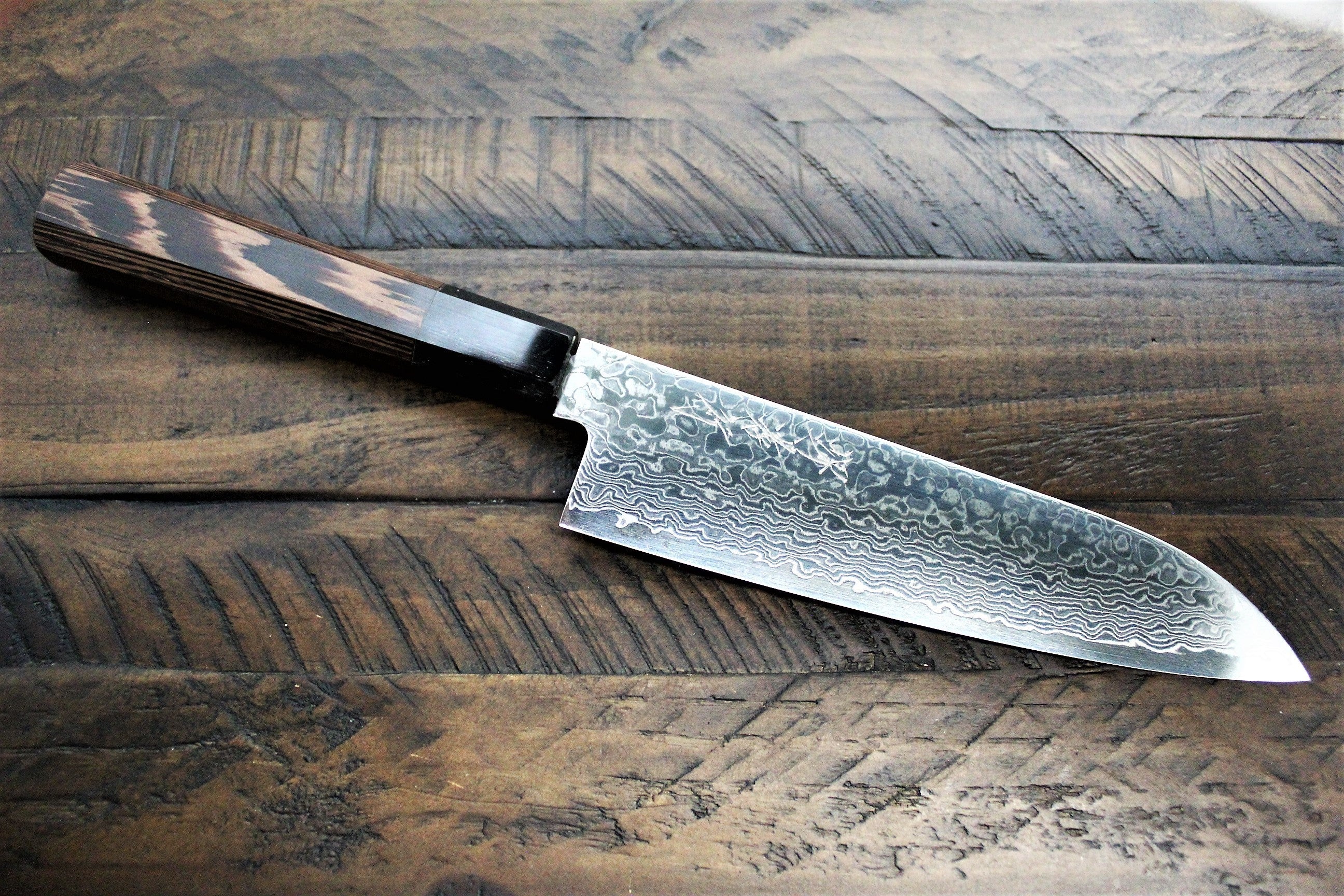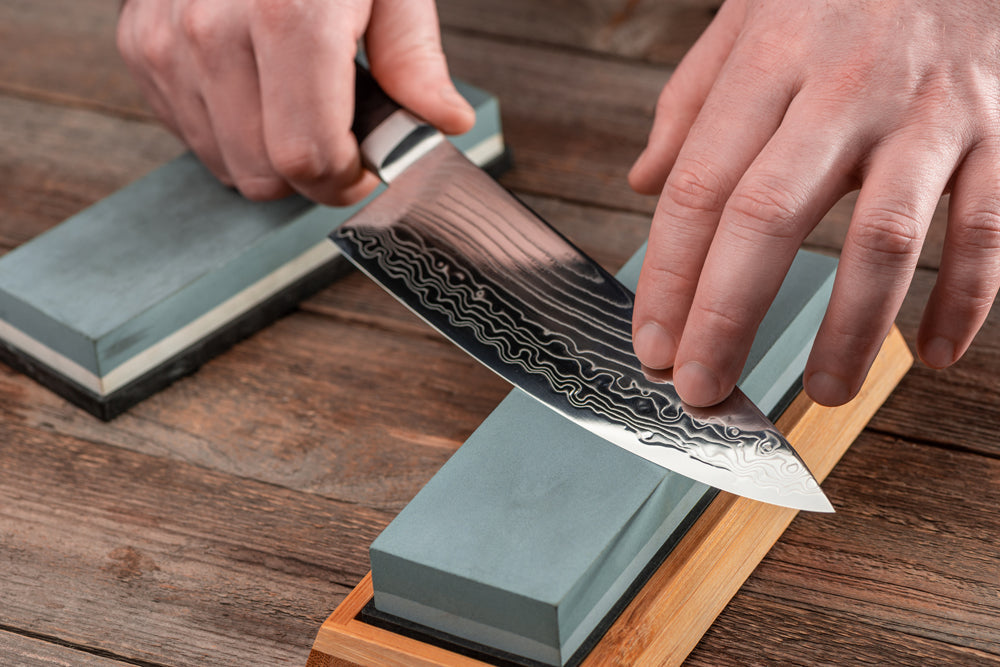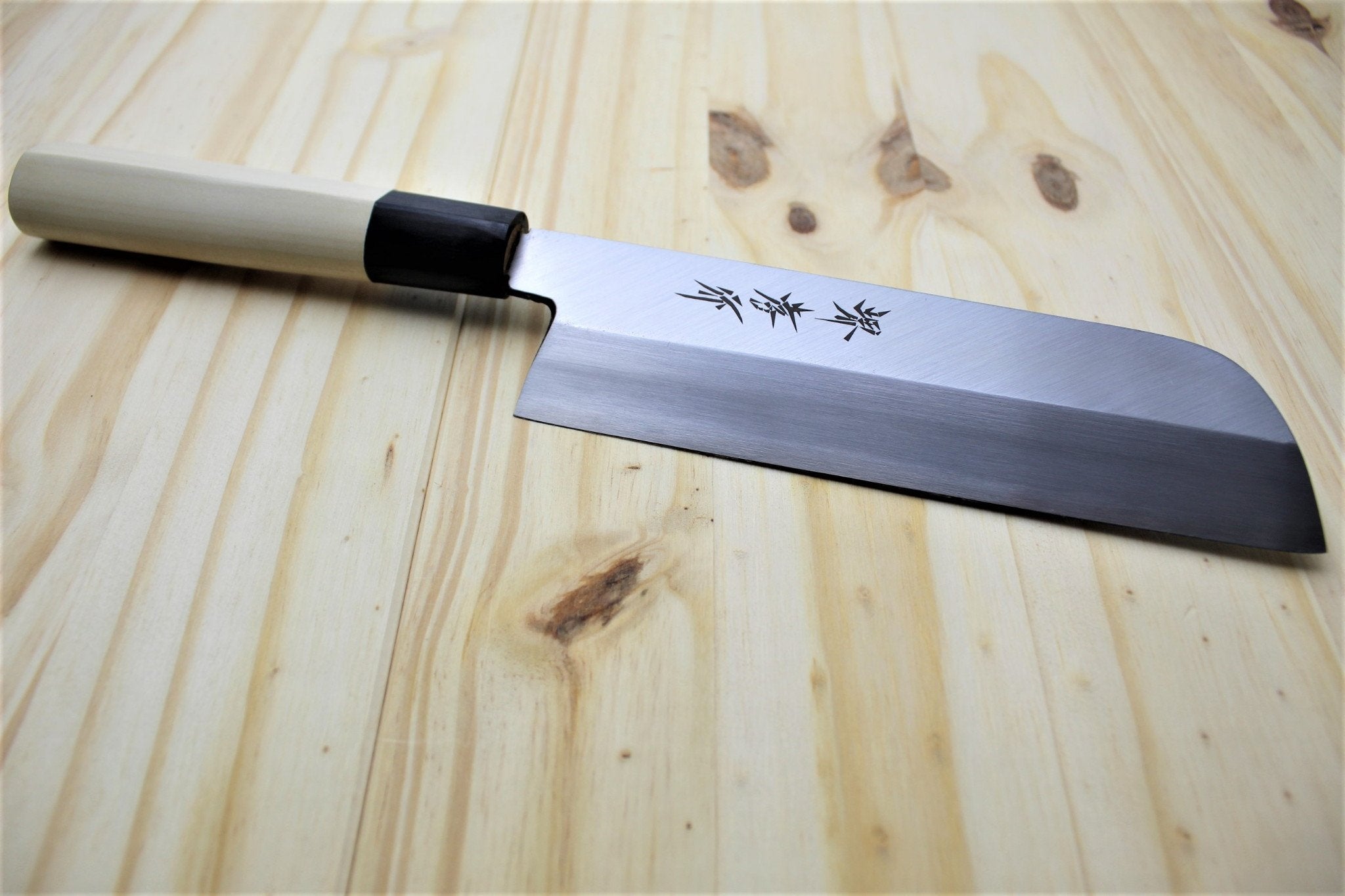
What are Santoku Knives Used For?
There are few things in a well-stocked kitchen more intimidating or exciting than a set of Japanese kitchen knives. Japanese cuisine has long put a focus on high-quality culinary knives when working in the kitchen. When it comes to purchasing the best set of Japanese kitchen knives, it can feel like a complicated decision considering all of the different types available.
Whether we are talking about the dynamic Gyuto Chef's Knife or the Nakiri all-purpose vegetable knife, each blade features its own special uses and applied techniques.
Today, we are going to direct our attention toward the wonderful Santoku knife.
Introducing the Santoku Knife (aka Bunka Bōchō)
The term "Santoku" translates to "three virtues" or "three uses" in English. This knife has gained popularity among both professional chefs and home cooks worldwide. It is not only great for slicing but also excels at chopping, mincing, and dicing. With its versatility and durable design, the Santoku knife is a valuable tool in any kitchen.
While exploring different knives, you might come across the term "Bunka." This style closely resembles a Santoku, though some manufacturers, like Global, have introduced both with subtle variations in edge profiles.
In the U.S., "Bunka" is often used to describe the Kengata Santoku, a version of the Santoku that features a downturned tip. This design allows for more precise slicing and adds a unique aesthetic appeal. The name "Kengata" translates to "sword-like," which perfectly reflects its striking appearance.
Similar to a chef's knife, the Santoku knife tends to be a little shorter than the standard Gyuto and is focused on smaller and more specific tasks, such as thinly slicing vegetables for a fancy garnish or dicing smaller portions for a dish. Many Santoku have a dimpled surface to prevent small foodstuff from sticking to the knife. The Santoku blade is exceptional for a variety of different purposes as well as its ease-of-use.
Santoku Characteristics
Steel Types
Santoku knives are made of either stainless steel or high carbon steel. Japanese steel is known for having a higher carbon content which allows for a sharper edge and a thinner blade. Their sleek design allows them to slice through food with ease, utilizing sharpness rather than sheer force.
Stronger Metal
The Japanese Santoku knife is a versatile tool designed for various cutting tasks. Crafted from high-quality Japanese steel, it benefits from exceptional material strength. At Hasu-Seizo, our team offers a range of authentic metal options. This allows for the creation of durable, long-lasting blades.
One notable example is the Sakai Takayuki Damascus 33, which features a 33-layer Damascus design with a VG10 steel core, delivering a sharp edge that retains its precision over time. To preserve its quality, proper maintenance should begin immediately. This helps extend the blade’s lifespan and performance in the kitchen.
Dimpled Edges
Most Santoku knives have dimples along the Tsura, the flat part of the blade. These indentations create a hollow or Granton edge, which helps minimize suction. They prevent food from sticking to the blade by reducing friction.
Since Santoku knives are often used for cutting fruits and vegetables, this feature helps keep juices from causing food to cling to the surface.
Tall Blade
As a multi-purpose knife, the Santoku is designed with a tall blade. This extra height creates space between the food and the knife, allowing for more precise and defined cuts. The tall blade also provides knuckle clearance. This makes it easier to cut directly above the board.
Additionally, it offers a stable surface for guiding the blade with the knuckles of the free hand. This helps enhance control while chopping or slicing.
Santoku Knife Uses and Benefits
Often described by its translation, the Santoku knife has three virtues or three uses. These virtues are chopping, dicing, and mincing.
Let's explore these traits in more detail while also underscoring some other beneficial Santoku knife uses.
Slicing
Santoku knives, like traditional chef's knives, are excellent for slicing. However, their effectiveness depends on the material being cut. Unlike conventional chef's knives, Santoku blades have a flatter shape, though their slight upward curve still allows for a smooth slicing motion.
For optimal slicing, lift the blade completely off the cutting board with each stroke. Instead of applying excessive downward force, focus on a gentle pulling or pushing motion. This technique takes advantage of the blade’s design and makes it easier to achieve thin, crisp slices.
Dicing
Precision is a defining feature of the Santoku knife. This makes it an excellent tool for dicing and mincing. While it delivers highly accurate cuts, there are some trade-offs.
Compared to a Western-style chef's knife, the Santoku is slightly less efficient when dicing large quantities of food quickly. However, its shorter blade offers better control and dexterity. As a result, it becomes easier to handle detailed work.
Chopping
Built to chop, Santoku blades are revered for their exceptional sharpness. They cut quickly through foods such as cheese, fruits, vegetables, nuts, herbs, or meats.
Unsurpassed maneuverability allows for an experienced santoku knife wielder to breeze through their chopping duties. This is one of the traits where the Santoku knife outperforms the best Western chef's knives.
Experience the Distinguished Artisan Kitchen Knives of Hasu-Seizo
Hasu-Seizo is a family-owned and operated business based out of the greater Seattle region. Founded on the idea that every kitchen deserves a better set of blades, Hasu-Seizo has continued the family tradition of providing authentic Japanese blades through the manufacturing of the Sakai Takayuki brand in Osaka.
With a reverence for the ancient history of Japan's finest blade-making tradition, Sakai Takayuki imbues each and every knife with not just history, but tradition, quality, and longevity. Shop our collection of multipurpose Santoku kitchen knives today!



